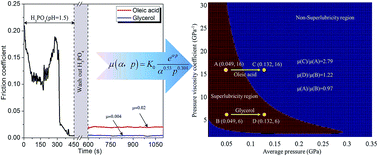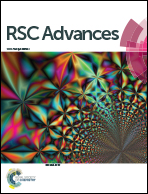Investigation of the difference in liquid superlubricity between water- and oil-based lubricants
Abstract
In the present work, we show that the liquid superlubricity (μ < 0.01) of water-based lubricants can be achieved between sapphire/sapphire even when the average contact pressure is higher than 100 MPa, while the superlubricity of oil-based lubricants cannot be achieved with the same contact pressure. However, when the pressure is reduced to 50 MPa, the friction coefficient of oil-based lubricants can translate from non-superlubricity (μ > 0.01) to superlubricity while the friction coefficient of water-based lubricants is always in the superlubricity region. The calculated friction results indicate that the liquid superlubricity is closely linked to pressure and the pressure–viscosity coefficient. When the pressure is high, the pressure–viscosity coefficient has to be as small as possible to achieve superlubricity, but when the pressure is low, superlubricity can be achieved with a wide range of pressure–viscosity coefficients. Finally, the liquid superlubricity region dependent on pressure and the pressure–viscosity coefficient were established, which are useful for us to design liquid superlubricity systems.


 Please wait while we load your content...
Please wait while we load your content...